Related Research Articles

Tangra is a region in East Kolkata that traditionally housed many tanneries owned by people of Hakka Chinese origin.
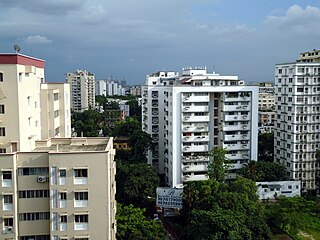
Ballygunge is a locality of South Kolkata in Kolkata district, West Bengal, India.
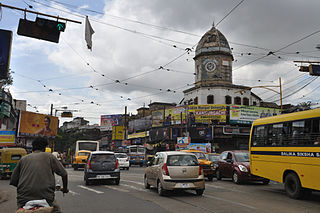
Maniktala is a residential area of North Kolkata, in Kolkata district, West Bengal, India.
Bhowanipore is a neighbourhood of South Kolkata in Kolkata district of West Bengal, India.

Khidirpur or Kidderpore is a neighbourhood of metropolitan Kolkata (Calcutta), in Kolkata district, West Bengal, India.

Kankurgachi is a neighbourhood of North-East Kolkata, in Kolkata district, West Bengal, India. With a cosmopolitan crowd and several commercial buildings and restaurants, Kankurgachi is considered one of the upmarket and elite places in Kolkata. Kankurgachi has become a very important part of Kolkata for its excellent connectivity and infrastructure. Kolkata Airport, Bidhannagar Road railway station, Salt Lake and New Town are close to Kankurgachi.

Chitpur is a neighbourhood in North Kolkata in Kolkata district in the Indian state of West Bengal. Sometimes, the entire area along Chitpur Road is referred to as Chitpur, although the various localities have distinctive names.

Ultadanga is one of the most crowded junctions in Kolkata. The place is located at the north-eastern fringe of the city and marks the limit of Kolkata district. Prominent places in Ultadanga are Telenga Bagan and Muchi Bazar.
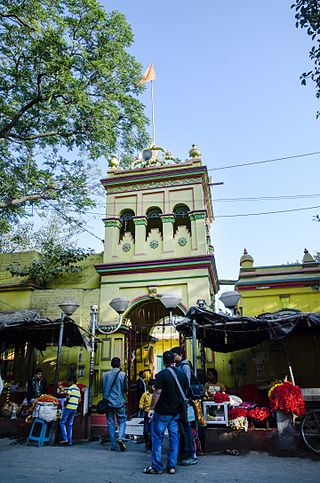
Kashipur is a neighbourhood of North Kolkata, in Kolkata district in the Indian state of West Bengal. One of the oldest neighbourhoods of the metropolis, it has a police station.
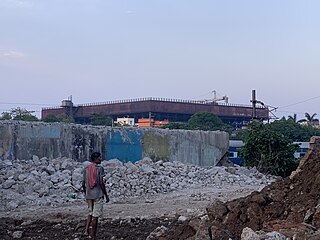
Tala is a neighbourhood in North Kolkata in Kolkata district in the Indian state of West Bengal.

Entally is a neighbourhood of Central Kolkata, in Kolkata district in the Indian state of West Bengal. It was considered close to the area which was home to the poor and the depressed castes. Mother Teresa started her activities in Entally.
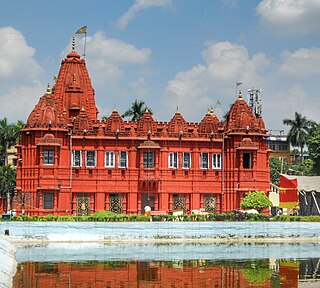
Belgachia is an area of North Kolkata in Kolkata district in the Indian state of West Bengal.

Beliaghata, also known as Beleghata, is a neighbourhood of Central Kolkata, in Kolkata district, West Bengal, India.
Sinthee or Sinthi is a neighbourhood of North Kolkata in Kolkata district, West Bengal, India.

Sealdah is a neighbourhood of Central Kolkata in Kolkata district in the Indian state of West Bengal.
Tiljala is a neighbourhood of South Kolkata, in West Bengal, India.

Topsia is a neighbourhood of East Kolkata, in West Bengal, India. Topsia falls in Kolkata district situated in West Bengal state, with a population 94809. The male and female populations are 49388 and 45421 respectively. The size of the area is about 2.8 square kilometer.
Narkeldanga is a neighbourhood in North Kolkata in Kolkata district in the Indian state of West Bengal.

Hastings is a neighbourhood of Central Kolkata in Kolkata district in the Indian state of West Bengal.
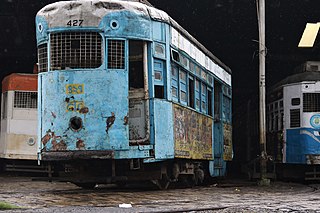
Beniapukur is a neighbourhood of Central Kolkata in Kolkata district in the Indian state of West Bengal. It is adjacent to Park Circus.
References
- 1 2 "District Census Handbook Kolkata, Census of India 2011, Series 20, Part XII A" (PDF). Pages 6-10: The History. Directorate of Census Operations, West Bengal. Retrieved 20 February 2018.
- ↑ Cotton, H.E.A., Calcutta Old and New, first published 1909/reprint 1980, Chapters 1-4, General Printers and Publishers Pvt. Ltd.
- ↑ Nair, P.Thankappan, The Growth and Development of Old Calcutta, in Calcutta, the Living City, Vol. I, pp. 14-15, Edited by Sukanta Chaudhuri, Oxford University Press, 1995 edition.
- ↑ Cotton, H.E.A., Calcutta Old and New, first published 1909/reprint 1980, pages 103-4 and 221, General Printers and Publishers Pvt. Ltd.
- 1 2 3 Nair, P.Thankappan, The Growth and Development of Old Calcutta, in Calcutta, the Living City, Vol. I, pp. 15-20, Edited by Sukanta Chaudhuri, Oxford University Press, 1995 edition.
- ↑ Nair, P.Thankappan, The Growth and Development of Old Calcutta, in Calcutta, the Living City, Vol. I, p. 23, Edited by Sukanta Chaudhuri, Oxford University Press, 1995 edition.


